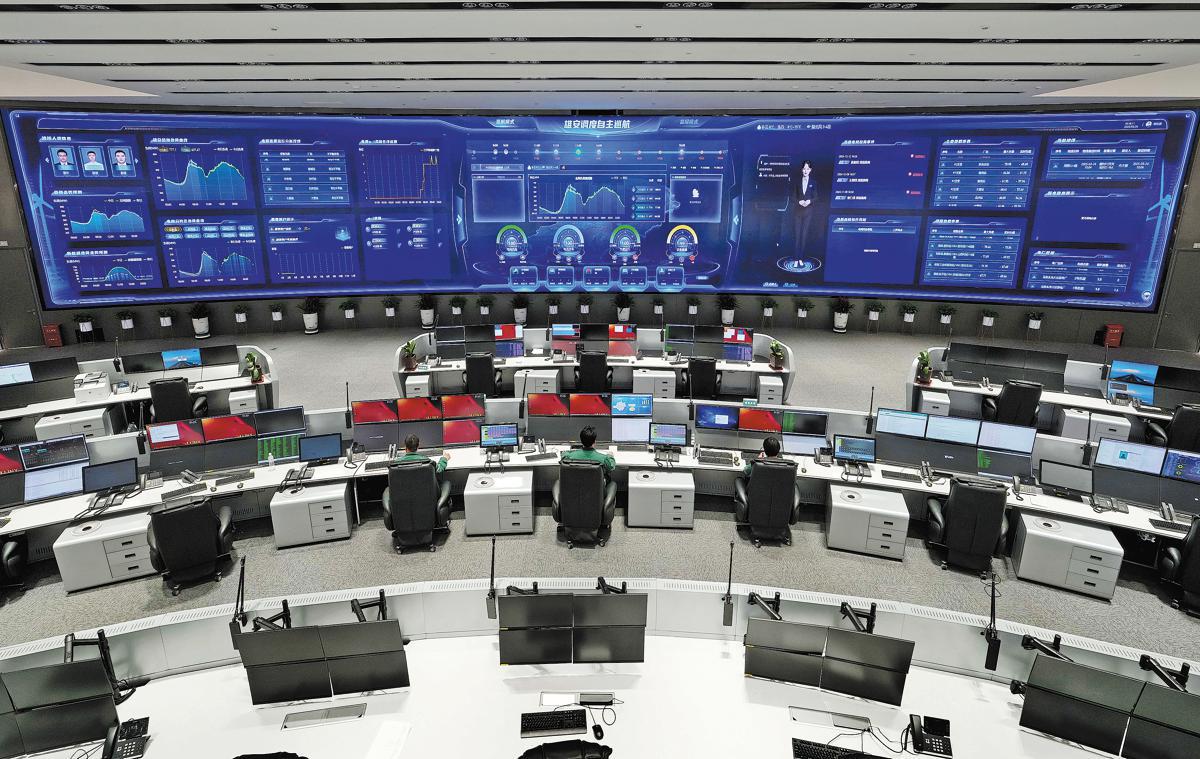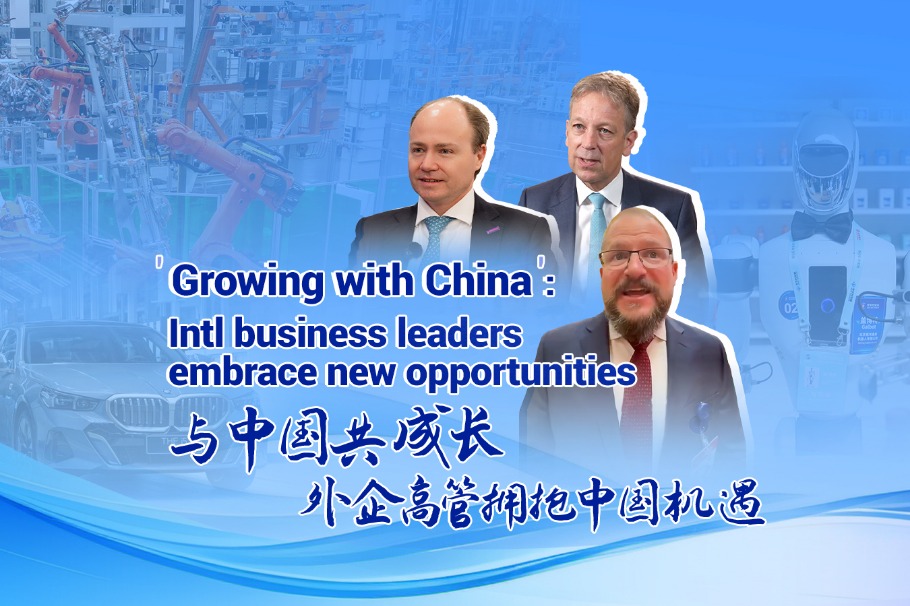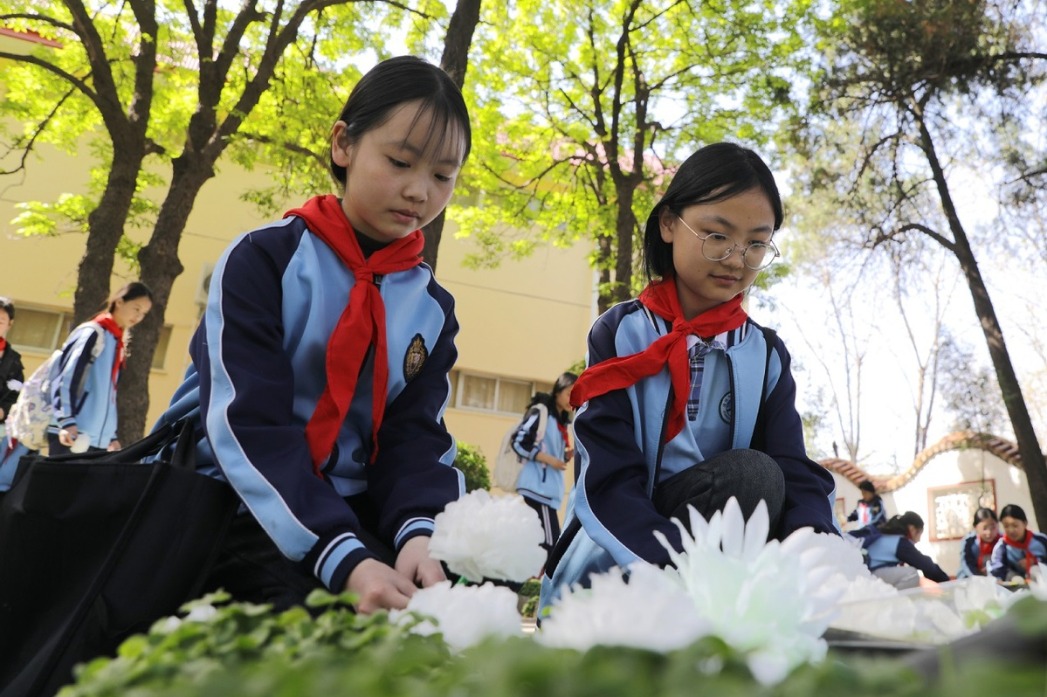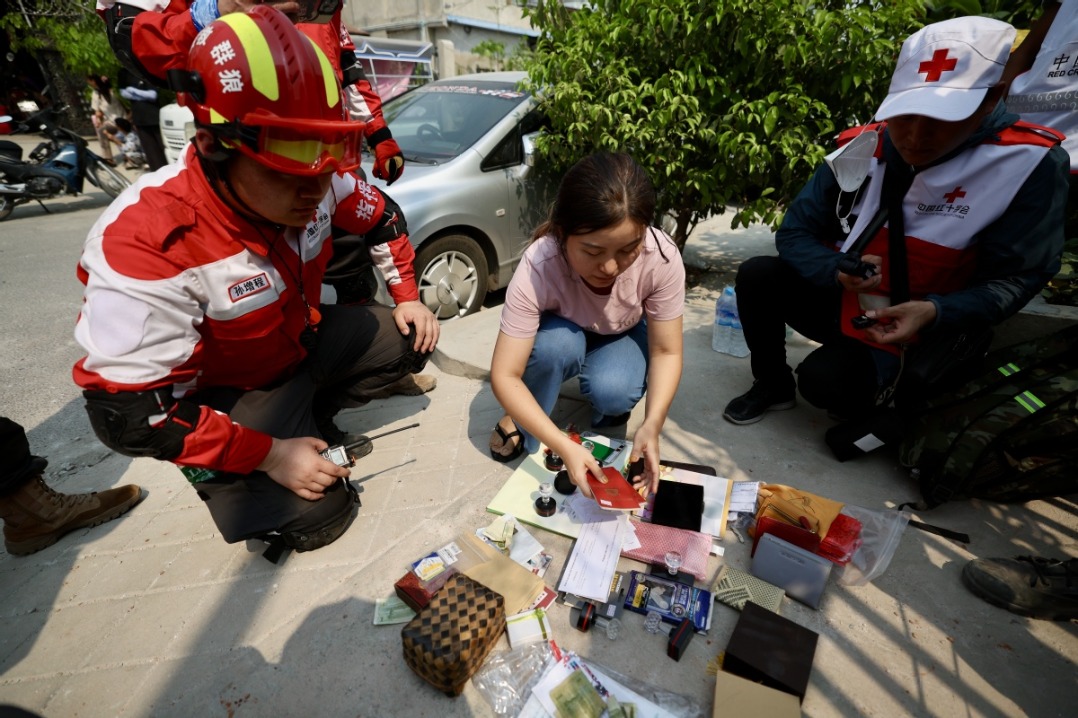'City of the future' champions green energy
Clean power generation put at forefront of Xiong'an New Area's urban planning

Editor's note: China Daily is publishing a series illustrating the country's efforts to achieve its carbon peak and carbon neutrality goals.

Looking at the sprawling Xiong'an Business Service Center complex from a distance, the tiles on the roofs of some of its buildings appear no different from those on other structures.
A closer inspection, however, reveals a fascinating secret: interspersed among the tiles are photovoltaic panels that seamlessly blend with the traditional Chinese design.
In total, some 28,400 solar panels, each measuring 117 centimeters in length and 30 centimeters in width, have been installed on the roofs of six buildings in the complex, said Huang Wenchang, an executive with China Xiongan Group, the operator of the center.
"Placed together, the solar panels would span an area of 1.4 standard football fields," he said.
These panels are expected to generate about 700,000 kilowatt-hours of electricity a year, and are currently able to meet 5 percent of the electricity demand in the complex, he added.
Xiong'an New Area in Hebei province marked its eighth anniversary on April 1.
Almost a decade on, this grand urban planning project is upholding its commitment to green, low-carbon development in its energy system.
A 2018 planning outline said Xiong'an would advance green, low-carbon production, lifestyles and urban development — aligned with the concept of sustainability, smart technology and innovation.
In the past eight years, Xiong'an has made encouraging progress in harnessing its local renewable energy resources, particularly solar power, according to a statement from the Xiong'an development and reform bureau, responding to China Daily.
The installed capacity for new energy generation in the new area has reached 274,700 kilowatts, as the local authorities promote the integrated development and utilization of "photovoltaic+" technologies, combining solar with other technologies or applications to enhance their effectiveness and usability in different scenarios, it said.























